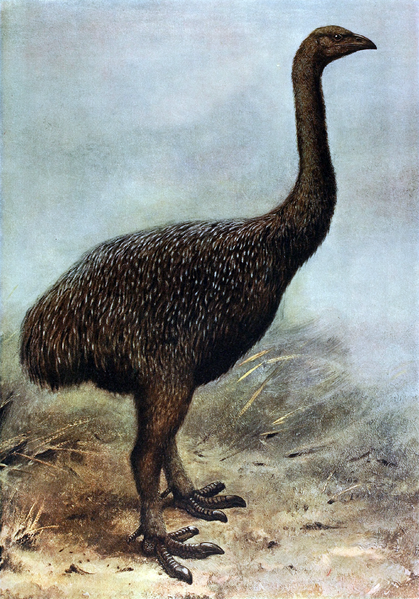 From “Extinction Risk Factors for New Zealand Birds Today Differ from Those of the Past”
From “Extinction Risk Factors for New Zealand Birds Today Differ from Those of the Past”
(ScienceDaily, Aug. 2, 2012), we learn of some interesting research in New Zealand, a good place to look because many species have gone extinct in a historical period for which we have a fair amount of specific information.
In a new study, a team of researchers examined whether biological traits such as body size might help scientists predict which species were likely to perish, and whether those risk factors held up over time.
To find out, they analyzed extinction patterns for New Zealand’s native birds across four time periods in New Zealand’s history, from pre-human times to the present. The data set included 274 species of living and extinct birds, such as ducks, penguins, geese, gulls, pigeons, parakeets and wrens.
The researchers looked for the biological traits that best predicted extinction risk in each time period.
They found differences:
Why do the extinction risk factors for New Zealand birds living today differ from those of the past? Size, for example, was only associated with extinction risk in the period after Polynesians arrived but before European settlement.
Europeans tended to endanger smaller bird species, through collection, fashion, introducing predators or competitors, etc.
“If extinction has already caused the loss of a susceptible trait, then this trait may no longer be relevant to surviving species even though it is still the original cause of past extinctions. This is known as an ‘extinction-filter’,” explained co-author Phillip Cassey of the University of Adelaide in Australia.
For studies of extinction risk, the results mean we should proceed with caution when analyzing different time periods.
Michael Denton, who describes himself a post-Darwinian, observed somewhere that it was curious how often bird species had simply jettisoned flight in New Zealand, where they apparently didn’t actually need it to escape predators. Turned out to be a fatal step.
With any luck, such research will help us assess true risks of extinction.
This species has been brought back from the brink:
Extinct New Zealand birds listed.
See also: New study suggests that being smarter is a defense against extinction